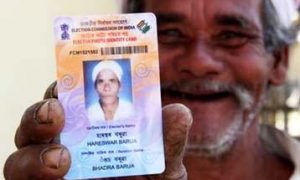As one of the nation’s premier lending institutions, banks carefully study the dynamics of the Union Budget every year. Dissected at length by their analysts and pundits, banks see the budget’s policies as tools to prudently recalibrate their business plans and targets for the upcoming financial year. Last year’s budget policies were favourable and prudent to the needs of the hour. One must laud the government for a slew of timely initiatives drawn while the economy was still in the throes of the pandemic. These measures helped to first nurse the economy to stability and then put it back on course for sustained growth. These measures included –
Read More: Davos 2023: Why WEF is batting for investment in agri, education, green jobs
– Introduction of the central bank digital currency (CBDC)
– Establishment of Digital Banking Units
– Establishment of National Asset Reconstruction Company Limited and several tax concessions.
What do banks expect from the upcoming Union Budget?
Read More: Budget 2023: PM Kisan Samman Nidhi scheme financial aid to be raised to Rs 8,000, say sources
For starters, banks would appreciate changes in capital gains tax rules that would encourage consumption in the economy. For instance, tax exemption up to Rs.one lakh in short-term capital gains will improve overall participation in the market and encourage investment. Another area of revision would be to reduce complexities, especially those related to exemptions, in the personal income tax structure, to further simplify it.
Generic expectations
We feel that the Union Budget should focus on boosting health, rural infrastructure, and investments in the education sector. India banks big on agriculture and to ensure self-reliance in the food sector, both agri and allied industries must be given all the essential support. Mahatma Gandhi National Rural Employment Guarantee Act (MGNREGA), 2005, has been successful at generating employment and hence needs to be strengthened with higher allocation. Similarly, other such schemes should be propagated and incentivised to help increase rural income. There is a need for rationalising capital gains across asset classes. Currently, there is a disparity, for instance, Gold investments attract a capital gains tax of 20% with a holding period of three years, while for other asset classes it is lesser.
Read More:-Govt extends tenure of Bank of Baroda MD Sanjiv Chadha
We anticipate that the Central Government would aim to hike the direct tax slab. We also expect it to drive measures that will strengthen the economy and empower the common man through entrepreneurship. We expect the government to come up with a series of measures that would incentivise SMEs, especially the smaller ones to come back into action. A suggestion would be introducing a tax holiday for 2 years and tax exemption on any new initiative by SMEs which will generate employment for at least 50 people, for next 5 years, increasing the slab of SMEs to Rs.500 Cr turnover from the present Rs.250 Cr turnover.
Moreover, we foresee the National Monetization Pipeline (NMP) to grow to Rs.100,000 crores. One key measure that will allow many domestic companies to attract foreign capital is the government allowing foreign listing by Indian companies with changes in regulations that would facilitate Special Purpose Acquisition Companies (SPACs)
Read More:India’s edible oil imports rise 22 % year-on-year in December 2022
Reduction of subsidies
The Government may take steps to curtail non-priority expenditure by rationalising subsidies such as those on fuel and fertilisers. Non-merit subsidies currently comprise a staggering 5.7% of GDP (1.6% from the Central Government and 4.1% from states) is unsustainable and need to be scrapped.
Expected policy changes
We expect some special packages and measures to be flagged off by the government for the banking space.
– Introduction of ‘HAPPY cards’ for NRIs linking Aadhar and passport, which would allow digital submission of KYC documents
Read More:India’s retail inflation is expected to come down to 5% by March: SBI research
– Measures to boost smooth credit flow through agri credit
– Financial inclusion via new technology
– Encouragement to PSU banks to raise capital by issuing shares/bonds from open market
– Measures to strengthen the process in NCLT
Capital infusion and investment initiatives expected
– The government, during the pandemic, displayed nimbleness and foresight with its action of raising the budgetary capex. It is likely to allocate a greater share in FY24 to combat the challenges of a deepening global economic downturn that may impact India’s economic recovery. We foresee reduction in personal income tax to spur disposable income and revive consumption demand. In addition, a rationalisation in slabs of GST for consumer durables is also on the anvil.
The capex allocation may get a boost, including a separate line of credit for states, of about 20-25% in the budget.
– For financing infrastructure, there is a need to deepen corporate bond market and prioritising a package for large play of urban municipal bonds.
Read More:Union Budget 2023: What banks are expecting from this year’s budgeta
– A ‘Blended Finance Star Multiplier’ programme could be launched for sustainability projects with an allocation of Rs10,000 crore.
– A clear roadmap may be laid down to bring down fiscal deficit to 6.0 percent of GDP in FY24 and to 4.5 percent by FY26.
– The Government may take measures to meet the disinvestment target and expedite PSU privatisation.
Read More: Budget 2023: PM Kisan Samman Nidhi scheme financial aid to be raised to Rs 8,000, say sources
Additionally, it would be a good measure if the legal system were strengthened to expedite faster recovery in case of NPAs. With co-lending emerging as a novel concept to facilitate smooth flow of credit to many credit-starved geographies, some tax concessions will help in promoting it further.
In conclusion, all banks expect the budget to help banks take fresh guard to renew the journey towards making India a five trillion dollar economy.





































